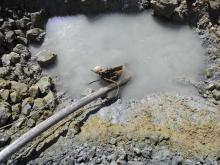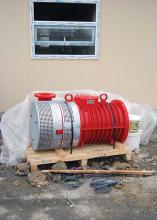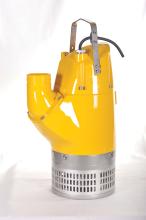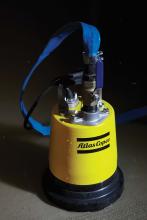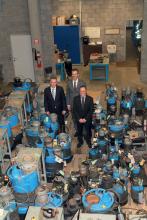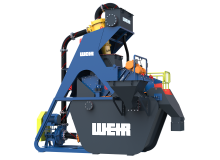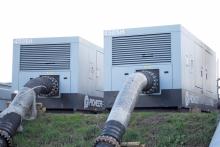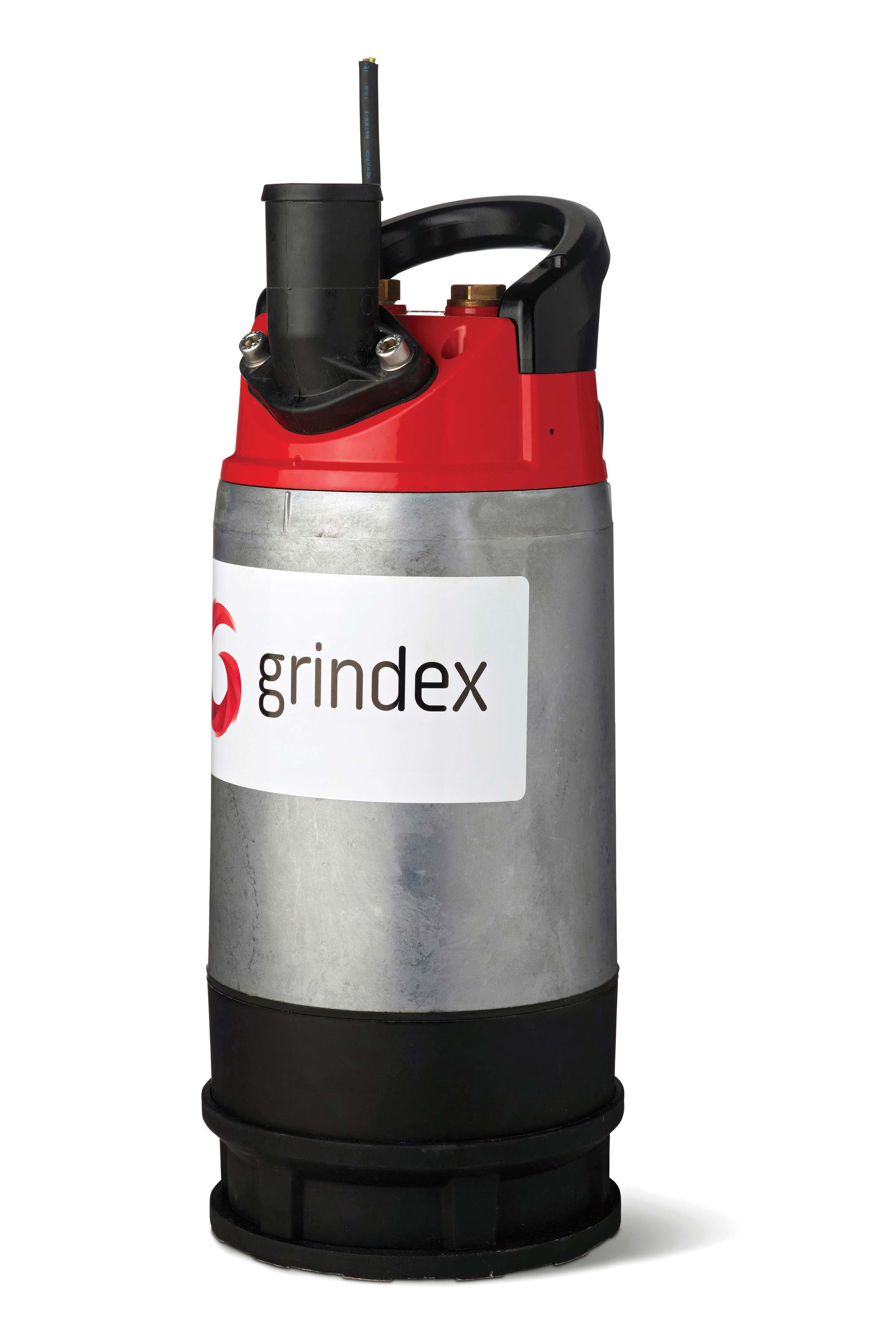
It is almost certain that at some time during their operational lives, quarries and mines will require action to remove water.
Indeed, many such facilities already have installations to deal with unwanted water, often by removing and then recycling it to be used again for a variety of processes, including washing.
For example, at the Quenast Quarry near Brussels, Belgium, which is run by
And while mining and quarrying equipment uses some of the largest bulldozers, trucks and digging equipment available in the world, not everything is supersized, says BBA Pumps.
Its massive BA-C250H45 bolt-on package requires a 32litre diesel engine pushing out more than 700bkW but the company’s BA80H D275 open diesel pump set, recently commissioned by a mining company, is a small package that offers a maximum flow of 130m³/hour and a shut-off head of 90mwc (metres of water column).
“The heavy-duty frame combined with the big performances allow this little 3” pump to play with the big boys in the mine and due to its versatility has earned itself a spot in the pump fleet easily,” says BBA Pumps, which has also introduced a new line of diesel driven bolt-on pump packages.
To cater for processes where there is no need for a complete skid and/or canopy, the company has developed a sub-frame assembly. These units feature a choice of the BA or BA-C pump coupled to a diesel engine, including the control panel, and mounted on a high-quality, galvanised sub-frame. The frames can be customised with such accessories as lifting bales and protection bars as required.
These auto prime pumps have a capacity of 100m3/hour to a maximum of 1,750m3/hour and a head of up to a maximum of 250mwc.
BBA Pumps says that the units can be bolted onto any object or structure, and offer true bolt-on pumping power.
The BA-C250H45 D610, for example, has a net weight of approximately 6,500kg; maximum flow of 1,500m³/hour; connections with a discharge of 8”/suction 16” and is powered by a
Optional pump wet-ends are available in Duplex stainless steel.
“Duplex stainless steel design enables the pumps to handle advanced dewatering jobs in environments where pH levels are unpredictable and varying, from very acidic to very alkaline,” says BBA Pumps.
Meanwhile, hire specialist
The B150 range, which includes both electric and diesel units, follows a six-month R&D programme from Sykes Pumps, utilising customer feedback to incorporate features and benefits aligned to market requirements.
Sykes Pumps’ rotary vane vacuum pump priming system delivers fully automatic self-priming from dry and rapid repriming where required.
Capable of heads of up to 38m, a maximum flow rate of 90litres/second, and excellent solids handling capability, the pumps have been designed with a weatherproof external control panel that enables site set-up in either an automated or manual configuration to suit individual applications, with an emergency stop button for safety.
Weighing 1,433kg (dry weight), the diesel version is said to be ideal for applications where there is no electric power source available at the pump site. The B150E electric unit weighs 1,050kg (dry weight).
“With the B150 range, we have combined high levels of specialist functionality with lower emissions, better fuel efficiency, reliability and convenience and we anticipate high demand for both bentonite applications and other projects involving high solids content or abrasive substances,” says Chris Graham, sales director at Sykes Pumps.
The mine, believed to contain some 110 million tonnes of iron ore, opened in 1961 and operated until 1983 when the worldwide recession saw work discontinued.
“We were acutely aware of the challenges involved in emptying the mine given the volume of water we were dealing with: a project like this could have serious consequences if handled incorrectly,” says Peder Nensén, project manager at LKAB of Sweden, a leading producer of processed iron ore products for steel-making that decided to drain the mine after almost 30 years of inactivity.
“An added challenge was northern Sweden’s harsh climate which meant that any solution would have to be able to cope with freezing temperatures.”
LKAB commissioned Xylem to deliver the dewatering solution, having developed similar solutions for mine dewatering projects in other areas of Sweden and Norway.
Its solution consists of two submersible Flygt 3351 pumps and four LS350/450 Flygt pumps, delivering a total pumping output of more than 2.5megawatts. The pumps are housed in a floating pumping station in the centre of the flooded area and in a dry station on land.
Xylem also supplied 20 Flygt agitators that are designed to prevent water around the pipelines from freezing in winter months.
The Xylem team worked closely with LKAB to deliver a customised turnkey solution for the project.
A double set of pipes, approximately 1,500m in length, connect the floating station to the dry station, which in turn is connected to a 5km-long gravity pipe, leading to the discharge point. The water from the mine eventually runs out into the Torne River, which flows into the Gulf of Bothnia.
Since September 2012, Xylem has drained about 20 million m³ of water and lowered the water level by 35m. It is envisaged that the project will soon be completed, and LKAB then intends to extract 12 million tonnes of iron ore/year.
Among the world leaders in electrical submersible pumps,
The pumps share all the main components and functions for the wear parts, and by adding a non-return valve to the hydraulic parts to prevent a backflow, the Milli can pump down to a level as low as a few millimetres.
“Milli fills a gap in our product portfolio that our customers have requested,” says Peter Uvemo, regional manager, EMEA.
“As with the other drainage pumps in the Grindex product portfolio, Milli also has our patented air valve,” says Uvemo.
The non-return valve disc moves in a confined space. When the pump is started, the valve opens up and allows the water to pass through until the water is gone, or until the pump is turned off.
“The pump is capable to even run dry because of the air valve, which switches the motor to be cooled by air. In combination with the motor protection, the pump will restart without any manual supervision. This will protect the pump and make the work effective as well as lower the cost. When the valve closes, the seal against the lip-ring on the low suction bottom prevents the water from flushing out and emptying the hose,” says Uvemo.
In France, a range of six
“This is a major project that represents an important opportunity for Tsurumi in France,” says Christophe Eginer, general manager of CE2A-TSURUMI France, Tsurumi Europe’s French subsidiary.
A single-phase LB480 light-duty drainage pump is working in conjunction with a HS3.75S submersible contractor’s pump to move water loaded with sand and earth while a single phase NK3-22L compact contractor’s pump is also working to pump sand and earth to 20m, at a flow of up to 50m³/hour. A three-phase KTZ35.5 is also performing a variety of dewatering activities.
Certain operations on the project require pumps that trigger automatically when groundwater rises. CE2A-TSURUMI France is providing two cast iron autonomous pumps (the KTZE23.7 and the KTZE43.7), equipped with an Electrode Auto Control System that detects when water levels are rising to automatically activate the pumping mechanism without the need for constant supervision.
CE2A-TSURUMI France is also providing a number of pumps to assist with concrete production at the site. A mobile concrete production facility has been installed close to the project in order to deliver the estimated 30,000m³/year. Eight KTZ-series contractor pumps are being used at this concrete facility, which is an essential part of operations at the site.
Tsurumi’s KTZ range of cast iron heavy-duty dewatering pumps are capable of pumping from a maximum depth of 25m, offering a variety of heads ranging up to 48.5m with flow of up to 146m³/hour.

